Vaping is on the rise worldwide, sparking urgent conversations about health, safety, and the need for effective detection in schools, offices, and public spaces. As this trend accelerates, organisations face new challenges in monitoring and managing vaping behaviour.
This handbook is your essential resource for everything related to the international vape detector, guiding you through the latest trends, advanced technologies, and compliance requirements in 2025.
Inside, you will discover global insights, a technology overview, legal considerations, tips for choosing the right solution, implementation steps, and future predictions. Take action now and empower your space with reliable detection strategies.
The Global Rise of Vaping and the Need for Detection
Vaping has experienced an extraordinary surge worldwide, transforming from a niche alternative to traditional smoking into a mainstream phenomenon. As more people adopt vaping, concerns over its impact on public health, especially among younger populations, have grown sharply. The need for reliable detection is now more urgent than ever, making the international vape detector an essential tool for organisations seeking to maintain safe environments.
Recent data reveals the true scale of the issue. In 2024, the World Health Organization estimated at least 15 million teenagers use e-cigarettes globally, with prevalence rising fastest in urban areas and educational settings. WHO estimates 15 million teen vapers worldwide. Schools, offices, and leisure venues are increasingly affected, as vaping devices become more discreet and accessible.
The health and safety implications of unchecked vaping are profound. In schools, exposure to vape aerosols can trigger respiratory issues, while in offices and public facilities, secondhand vapour may aggravate allergies or asthma. The international vape detector helps mitigate these risks by enabling timely intervention and reducing the likelihood of long-term health consequences for non-vaping occupants.
Multiple factors drive the demand for advanced detection. There is growing pressure from public health authorities to address vaping, particularly where youth or vulnerable populations are present. Regulatory bodies in the US, UK, Australia, and across Asia-Pacific have tightened rules on vaping in public spaces. This has led many organisations to seek international vape detector solutions not only to comply with legal mandates but also to avoid reputational and financial liabilities.
Regional hotspots have emerged, each with unique challenges. In the UK, enforcement in schools is a priority, while in the US, both educational and corporate environments see rising incidents. Australia has seen legislative changes and public debate, reflecting the complexities of regulation. The Asia-Pacific region faces a mix of high youth uptake and evolving compliance standards, making the adoption of an international vape detector especially relevant.
Case studies highlight the consequences of inadequate detection. Several schools reported health emergencies linked to undetected vaping in bathrooms or classrooms. Offices have faced disciplinary issues and even legal claims due to indoor vaping. In leisure environments, the lack of monitoring has led to anti-social behaviour, including drug use disguised by vaping devices. These incidents underscore the importance of a proactive approach.
Anti-social behaviour and drug use are increasingly intertwined with vaping trends. The international vape detector now plays a vital role in identifying not only nicotine-based vapour but also substances such as cannabis or synthetic drugs. By catching incidents early, facilities can uphold their duty of care and foster safer, more respectful spaces.
Another crucial aspect is air quality. Vape aerosols can linger in poorly ventilated areas, affecting overall air cleanliness. Proactive monitoring with an international vape detector allows facilities to track trends, respond quickly, and maintain a healthy indoor environment. As vaping continues to evolve, the need for comprehensive detection and monitoring will only intensify.
In summary, the rise of vaping across the globe has created new health, safety, and compliance challenges. For schools, offices, and public venues, deploying an international vape detector is no longer optional, it is a strategic necessity for safeguarding people and meeting regulatory expectations.

Vape Detection Technology: How It Works and What’s New in 2025
Understanding how an international vape detector functions is essential for effective deployment in any environment. In 2025, technology continues to advance rapidly, offering new levels of accuracy, integration, and intelligence. This section explores the core principles, integration capabilities, AI-driven innovations, and the practical realities of maintaining these devices.
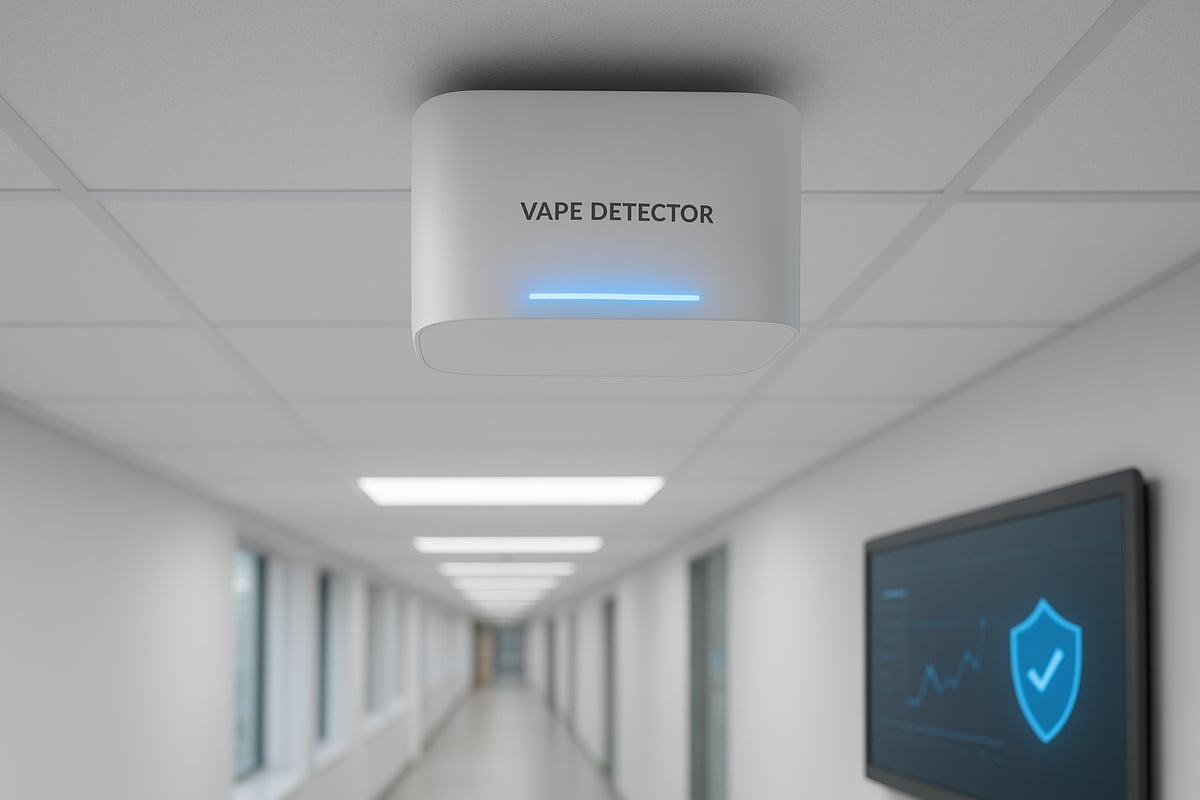
Key Detection Methods and Sensor Types
Modern international vape detector systems employ a combination of advanced sensors to identify vaping activity. These include particulate sensors that track fine aerosols, chemical sensors that detect volatile organic compounds, and air quality sensors that monitor changes in environmental conditions. Each sensor type contributes to a comprehensive detection approach.
Unlike traditional smoke detectors, an international vape detector is engineered to distinguish between vapour, smoke, and other airborne substances. This precision is vital in settings where false alarms can disrupt operations. For example, in schools, detectors must accurately identify vaping without mistaking it for harmless aerosols from cleaning products.
The latest models offer improved accuracy, faster response times, and reduced maintenance needs. Educational and corporate environments benefit differently. In schools, rapid alerting and robust filtering are crucial to counter student vaping. In offices, sensitivity and integration with existing security systems are often prioritised.
For a deeper dive into these technological advancements, you can explore Global vape detection technology, which provides a comprehensive overview of international solutions and evolving sensor capabilities.
Integration with Smart Building Systems
A modern international vape detector is not a stand alone device. Integration with building management systems, CCTV, and alarm networks enhances its effectiveness. Facility managers can receive real time alerts through cloud based platforms, enabling swift responses to incidents.
Smart integration also supports automated incident logging and reporting. Many detectors now offer compatibility with mobile apps, allowing notifications via SMS, email, or in app messages. This ensures that stakeholders remain informed no matter where they are.
Data privacy and cybersecurity are critical. With international vape detector systems connected to networks, robust encryption and compliance with privacy regulations are essential to protect sensitive information.
Innovations in 2025: AI and Machine Learning
Artificial intelligence is revolutionising international vape detector technology in 2025. AI driven pattern recognition enables devices to distinguish vaping from other aerosols, such as dust or humidity, by analysing unique signatures. This results in fewer false alarms and greater operational confidence.
Adaptive algorithms enable detectors to learn from their environment. Over time, they refine their sensitivity based on trends and feedback, reducing unnecessary disruptions. Predictive analytics allow facility managers to spot patterns, such as repeat incidents or emerging hotspots, supporting proactive intervention.
The international vape detector landscape is also benefiting from AI powered reporting tools. These offer detailed analytics, helping organisations refine their policies and adapt quickly to new vaping behaviours. The result is a smarter, more responsive security infrastructure for any public or private space.
Maintenance and Longevity of Vape Detectors
Sustaining the performance of an international vape detector requires regular maintenance. Most devices are designed for minimal hands on intervention. Remote diagnostics allow technicians to monitor system health and apply firmware updates without physical access.
Typical maintenance tasks include periodic sensor calibration, filter replacement, and software updates. Many international vape detector systems provide automated alerts when servicing is due. This reduces downtime and ensures continuous protection.
Cost efficiency is a key consideration. High quality detectors offer extended lifespans, often five years or more, with low ongoing maintenance costs. Organisations benefit from predictable budgeting and reliable operation, making the international vape detector a long term investment in safety and compliance.
Legal and Compliance Considerations for International Vape Detection
Understanding legal and compliance requirements is essential when deploying an international vape detector. Regulations are evolving rapidly, and organisations must stay informed to ensure both effective monitoring and adherence to local and international laws.
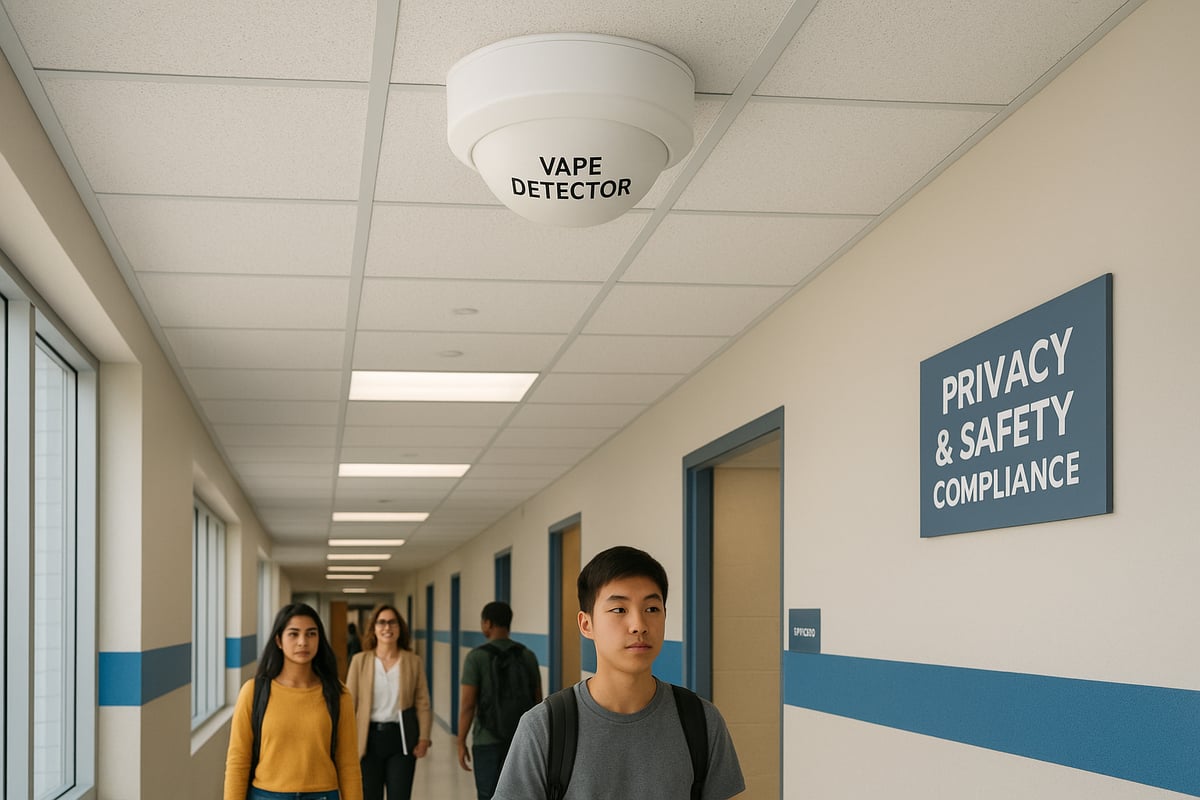
Global Regulatory Landscape
Vaping laws differ significantly across regions, and the use of an international vape detector must align with these local frameworks. In the UK, recent legislation has tightened restrictions on vaping in public spaces and schools. EU member states are also moving towards stricter controls, while the US enforces a patchwork of state and federal rules. Australia has recently revised its approach to vape bans, reflecting ongoing debate and regulatory shifts.
Asia presents a complex scenario, with some countries embracing strict prohibitions and others taking a more lenient stance. For organisations with a global footprint, it is crucial to review regulations in each operating region before installing an international vape detector.
Mandatory Detection in Key Sectors
Many jurisdictions now require vape detection in specific environments. Schools, hospitals, and government buildings often face mandatory monitoring to protect public health. The international vape detector is increasingly specified in safety policies, especially where youth or vulnerable populations are present.
In educational settings, the rise of underage vaping has driven school boards and health authorities to prioritise detection. Offices and leisure spaces are also under scrutiny, particularly where local laws mandate smoke-free or vape-free environments.
Data Privacy and Compliance
Deploying an international vape detector involves collecting and processing data, which raises important privacy considerations. GDPR in the UK and EU, CCPA in California, and similar laws worldwide set strict standards for data handling. Organisations must ensure that any system used for vape detection complies with local privacy laws, including secure storage, limited access, and clear data retention policies.
Transparency is vital. Stakeholders should be informed about the presence and purpose of detectors, as well as how data will be used. This approach not only fosters trust but also supports legal compliance.
Penalties and Enforcement
Non-compliance with vape detection laws can result in significant penalties. Fines, loss of operating licences, and reputational damage are real risks for institutions that fail to implement or maintain proper detection measures. Recent enforcement actions have targeted both public and private entities, with authorities focusing on environments where vaping poses health or safety risks.
Documented policies, regular system checks, and staff training are essential to demonstrate compliance and reduce the risk of enforcement action. Real-world cases show that proactive use of an international vape detector can help avoid costly penalties.
International Standards and Policy Guidance
Certification to international standards such as ISO or IEC is a key consideration when selecting an international vape detector. These standards ensure device reliability, interoperability, and safety. Organisations should prioritise detectors that meet or exceed recognised benchmarks.
Guidance on creating compliant detection policies is available in several regions. For an in-depth look at how evolving UK vape laws are shaping compliance requirements, see this Vape detection legal compliance guide.
Government Initiatives and Future Trends
Governments worldwide are increasing funding for public health programmes targeting vaping. Grant schemes and public-private partnerships are emerging, especially in education and youth services. The international vape detector is becoming central to these initiatives, reflecting its importance in safeguarding public spaces.
Looking ahead, regulatory trends point towards even stricter controls and broader mandates for vape detection. Staying ahead of these changes ensures that organisations remain compliant and protect the health of their communities.
How to Choose the Right International Vape Detector
Selecting the right international vape detector is a critical step in safeguarding your environment, whether you manage a school, office, or leisure venue. The process requires careful evaluation of risks, feature sets, brand options, and compliance needs. By following a structured approach, you can ensure your investment meets both regulatory obligations and day to day operational demands.

Assessing Your Environment and Risks
The first step in choosing an international vape detector is a thorough assessment of your environment. Identify all high risk areas such as bathrooms, classrooms, staff rooms, and communal spaces. These locations often see higher rates of vaping, especially among younger individuals.
Consider occupancy patterns and airflow in each space. Areas with poor ventilation or high foot traffic may require more sensitive or multiple detectors to ensure comprehensive coverage. Tailoring your detection strategy to the unique characteristics of your facility maximises effectiveness and minimises blind spots.
Engage with stakeholders including facilities, security, and IT teams. Their insights help determine where the international vape detector will have the greatest impact and how it can integrate into existing safety protocols. A targeted risk assessment lays the foundation for a robust detection solution.
Key Features to Look For
When reviewing options for an international vape detector, focus on essential features that align with your operational needs. Sensitivity is paramount, as you want the detector to reliably identify vaping events without frequent false alarms.
Look for multi substance detection capabilities. The best devices can identify not only vape aerosols but also smoke and certain illicit substances, broadening your safety net. Evaluate the range of alert options available, such as local alarms, SMS, email, or app notifications, to ensure rapid response.
Other important factors include ease of installation, compatibility with building management systems, and ongoing maintenance requirements. Choosing an international vape detector with these features ensures you are prepared for both current and future vaping challenges.
Comparing Leading Brands and Models
The international vape detector market features several reputable manufacturers, each offering unique advantages. When comparing brands, consider accuracy, reliability, integration options, customer support, and overall value.
Below is a sample comparison table:
| Brand | Detection Range | Multi Substance | Integration | Price |
|---|---|---|---|---|
| Vape Guardian | High | Yes | Full BMS | £££ |
| Competitor A | Medium | No | Limited | ££ |
| Competitor B | High | Yes | Full BMS | ££££ |
For a deeper dive into the strengths and weaknesses of top solutions, see this Comparing vape detector systems guide. This resource helps you weigh features and performance across international vape detector brands, ensuring you make an informed decision.
Factor in warranty terms, software update policies, and user feedback. The right choice balances technology, cost, and service support, all crucial for a long lasting international vape detector deployment.
Vape Guardian: Advanced Detection and Monitoring Solutions
Vape Guardian stands out as a leader in the international vape detector field, offering advanced technology and UK based expertise. Their devices deliver real time detection of vape aerosols, monitor air quality, and can trigger alerts for anti social behaviour.
Vape Guardian’s systems are designed for seamless integration with existing building management and security infrastructure. This capability is essential for schools, offices, and leisure spaces seeking unified safety solutions. The international vape detector technology used by Vape Guardian is tailored to meet strict compliance standards and data privacy requirements.
Customer support is a core focus, with comprehensive training, remote diagnostics, and ongoing firmware updates. By choosing Vape Guardian, you invest in an international vape detector solution that is reliable, future ready, and fully supported for global deployment.
Step-by-Step Guide to Implementing Vape Detection in 2025
Implementing an international vape detector system requires a structured approach, from initial assessment to ongoing evaluation. This step-by-step guide will help you navigate each stage, ensuring effective deployment and long-term success.
Planning and Site Assessment
Start by conducting a comprehensive risk audit of your premises. Identify high-priority zones where vaping is most likely to occur, such as bathrooms, classrooms, offices, and leisure spaces. Map out these areas to ensure no blind spots are missed during the installation of your international vape detector system.
Engage key stakeholders early. Facilities managers, IT staff, security, and compliance officers should collaborate to set clear objectives and expectations. Consider factors like occupancy rates, airflow, and any unique building layouts that might affect detector performance.
For educational settings, reviewing case studies and best practices can be invaluable. For example, the rise of underage vaping has prompted many schools to adopt detection technologies. For further insights, see Vape detection in schools worldwide for real-world examples and strategies.
Installation and Integration
Once the assessment is complete, focus on the physical installation of your international vape detector units. Place detectors in identified high-risk zones, keeping in mind the manufacturer’s guidelines regarding ceiling height and sensor coverage.
Integrate the detectors with existing building management systems for seamless operation. This may include connecting to alarm systems, CCTV, or access controls. Collaboration with your IT team is essential to ensure compatibility and network security.
Test the system thoroughly before going live. Simulate vaping incidents in controlled conditions to verify sensitivity and alert accuracy. Document all integration points and ensure a clear communication plan for all involved departments.
Staff Training and Response Protocols
Effective deployment of an international vape detector system depends on well-trained staff. Develop a comprehensive training programme that covers device operation, maintenance, and privacy considerations.
Create easy-to-follow incident response plans so staff know exactly how to act when an alert is triggered. Assign clear roles, such as first responders, IT support, and compliance officers, to streamline the process. Provide refresher training periodically to keep everyone up to date with the latest procedures.
Real-world experience shows that schools and workplaces benefit from clear protocols. For example, Schools implement surveillance tech to detect student vaping highlights how consistent staff training can lead to more effective intervention and safer environments.
Ongoing Monitoring and Reporting
After installation, set up dashboards for real-time monitoring of your international vape detector network. These dashboards allow facility managers to receive instant alerts, track trends, and generate compliance reports with ease.
Schedule regular system checks to ensure all detectors are functioning correctly. Use automated reports to identify patterns, such as times or locations with higher vaping incidents. These insights help refine policies and address emerging risks promptly.
Maintain a feedback loop with stakeholders, sharing monthly or quarterly reports to demonstrate compliance and support funding or policy adjustments as needed.
Evaluating and Adapting Your Strategy
Continual improvement is vital for maintaining an effective international vape detector programme. Use data collected from ongoing monitoring to review and update your detection strategy regularly.
Schedule annual reviews to assess the performance of your system and incorporate feedback from staff and stakeholders. Stay informed about new vaping trends, regulatory changes, and technological advancements to keep your approach current.
By adapting your strategy proactively, you ensure your international vape detector solution remains robust and compliant, safeguarding your environment against evolving challenges.
The Future of Vape Detection: Trends and Predictions for 2025 and Beyond
The landscape of vape detection is set for significant transformation in 2025 and beyond. As vaping continues its global ascent, the international vape detector market faces new demands, technological breakthroughs, and regulatory shifts. Stakeholders must stay ahead of these changes to ensure environments remain safe, compliant, and future proof.
Regulatory Changes and Market Growth
Governments worldwide are intensifying their focus on vaping. In 2025, stricter regulations are anticipated, particularly in schools, hospitals, and public spaces. The international vape detector industry must adapt as authorities introduce mandatory detection requirements and refine existing policies. For example, Australia recently adjusted its proposed vape ban, reflecting the evolving and sometimes contentious nature of legislation, as detailed in Australia revises planned vape ban after opposition. With the global vaping market projected to reach $27.2bn in 2025, the demand for compliant and effective detection will only intensify (Global vaping market projected to reach $27.2bn in 2025).
Sensor Miniaturisation and IoT Integration
A major trend is the miniaturisation of sensors and their seamless integration into Internet of Things (IoT) ecosystems. The latest international vape detector models are smaller, more discreet, and capable of real time data transmission. Facilities can now embed these detectors within lighting fixtures or ventilation systems, allowing for unobtrusive yet powerful monitoring. Enhanced connectivity supports centralised management, making it easier for building operators to oversee multiple locations from a single dashboard.
AI and Predictive Safety Monitoring
Artificial intelligence is redefining the international vape detector landscape. Advanced detectors now use AI to distinguish between vaping, smoking, and harmless aerosols with remarkable accuracy. Machine learning algorithms adapt to environmental patterns, reducing false alarms and providing predictive insights. These systems can alert staff to potential incidents before they escalate, supporting proactive intervention and improved safety outcomes, especially in high risk environments.
Expansion into New Environments
The reach of the international vape detector is rapidly expanding beyond traditional settings. In 2025, expect to see deployment in transportation hubs, hospitality venues, and even outdoor public spaces. This trend is driven by increasing awareness of the risks associated with secondhand vapour and the need to ensure compliance with diverse local regulations. Customisable detectors allow for tailored solutions, meeting the unique challenges presented by each environment.
Air Quality Integration and Emerging Challenges
Modern international vape detector solutions are increasingly linked with broader air quality monitoring systems. By measuring volatile organic compounds and particulate matter, these devices contribute to holistic environmental health strategies. However, as new vaping substances and devices emerge, detection technology must continually evolve. Countermeasures against stealth vaping and novel aerosol formulations will be vital for maintaining effective monitoring.
Opportunities for Global Collaboration and Standardisation
International cooperation is becoming essential in the fight against illicit vaping and non-compliance. Shared standards and best practices are enabling the international vape detector sector to keep pace with rapid technological and regulatory change. The growing complexity of the market, highlighted by shifting regulations such as those in Australia, underscores the need for global alignment. Manufacturers, policymakers, and public health organisations are increasingly working together to develop unified frameworks and certification protocols.
Looking ahead, the international vape detector will play a pivotal role in promoting healthier, safer spaces worldwide. By embracing innovation, adapting to emerging threats, and fostering cross border collaboration, stakeholders can ensure their detection strategies remain effective and future ready.
As we’ve explored, understanding global vaping trends, the latest detection technologies, and compliance requirements is essential for anyone looking to create safer spaces in 2025. Whether you’re safeguarding schools, offices, or public venues, having the right vape detection strategy in place can make all the difference for health, safety, and peace of mind. If you’re ready to take the next step and want tailored advice for your environment, I recommend you talk to our team and protect your building today. We’re here to help you put these insights into action with confidence.
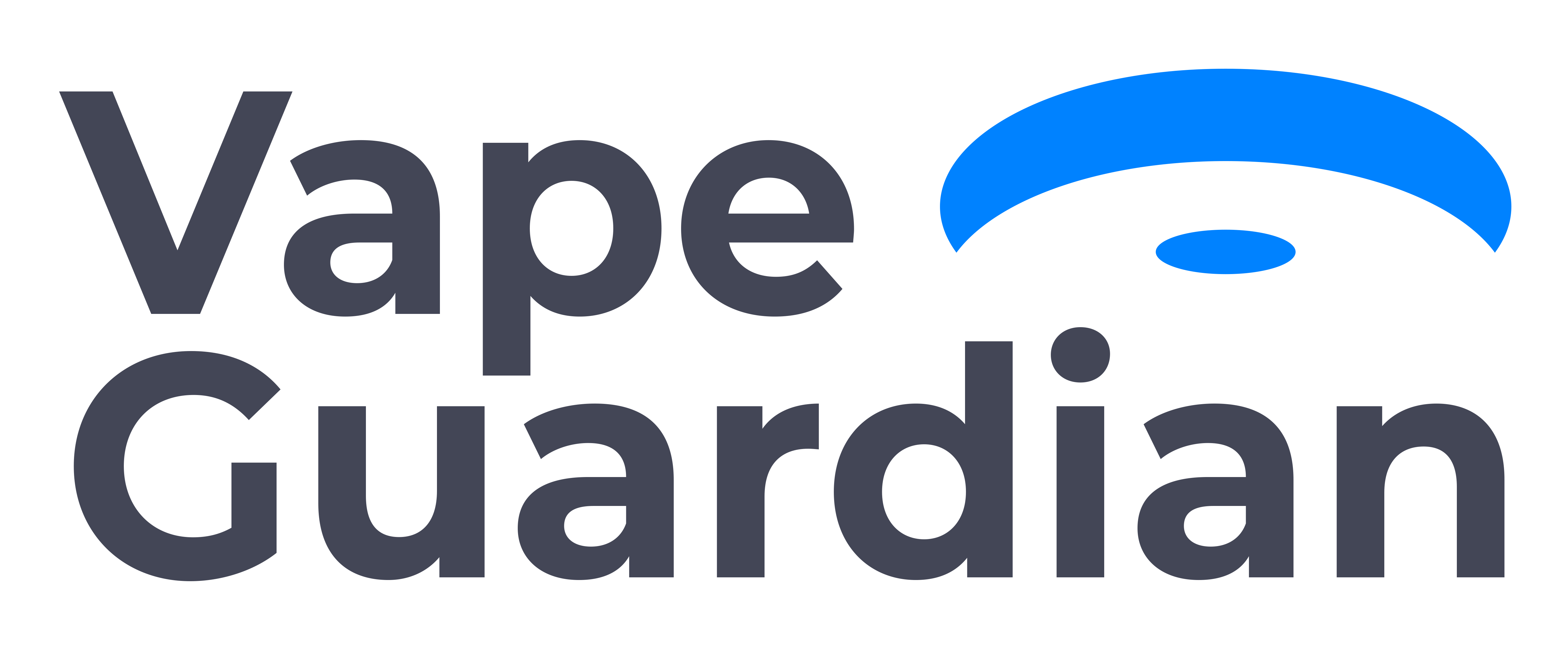
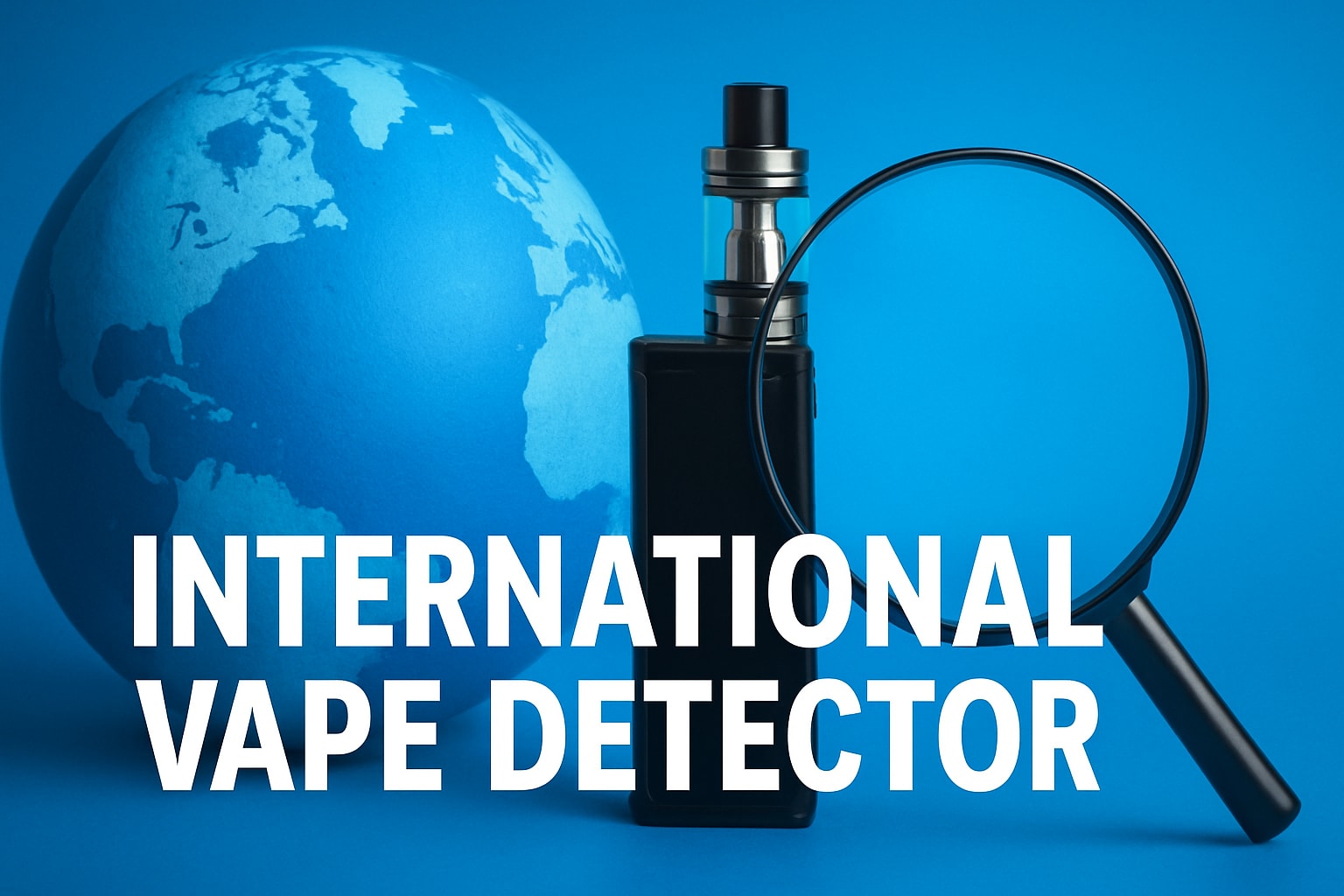
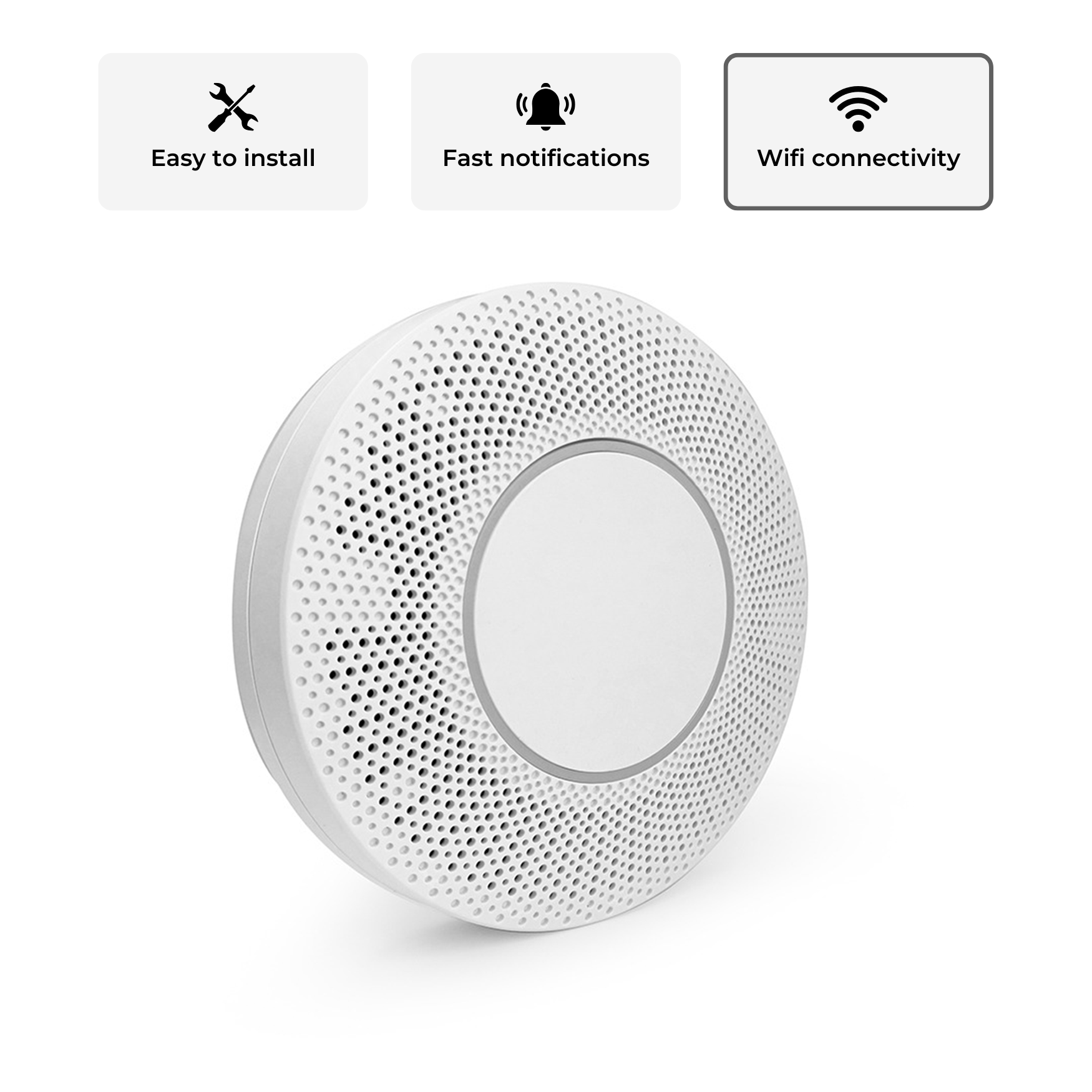
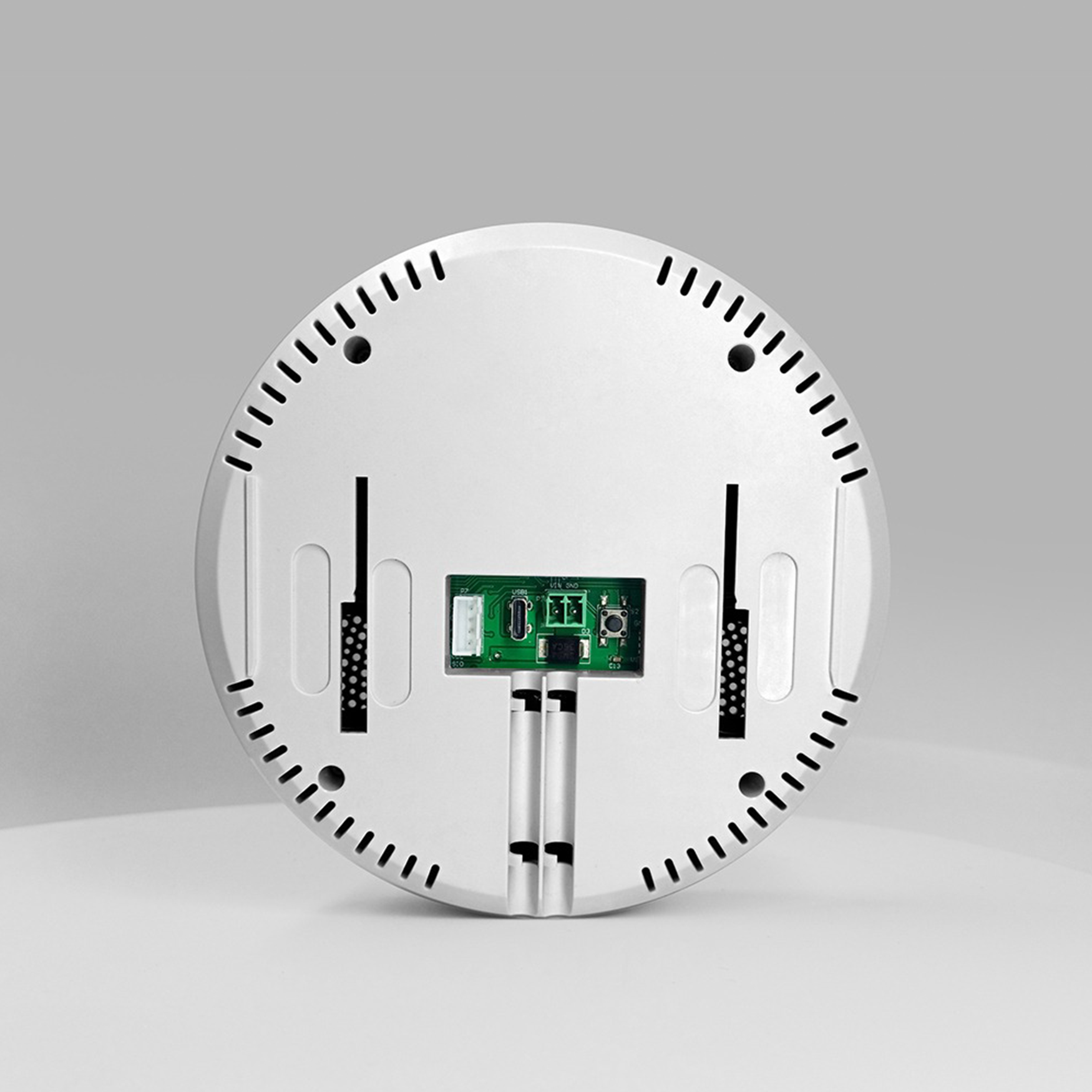

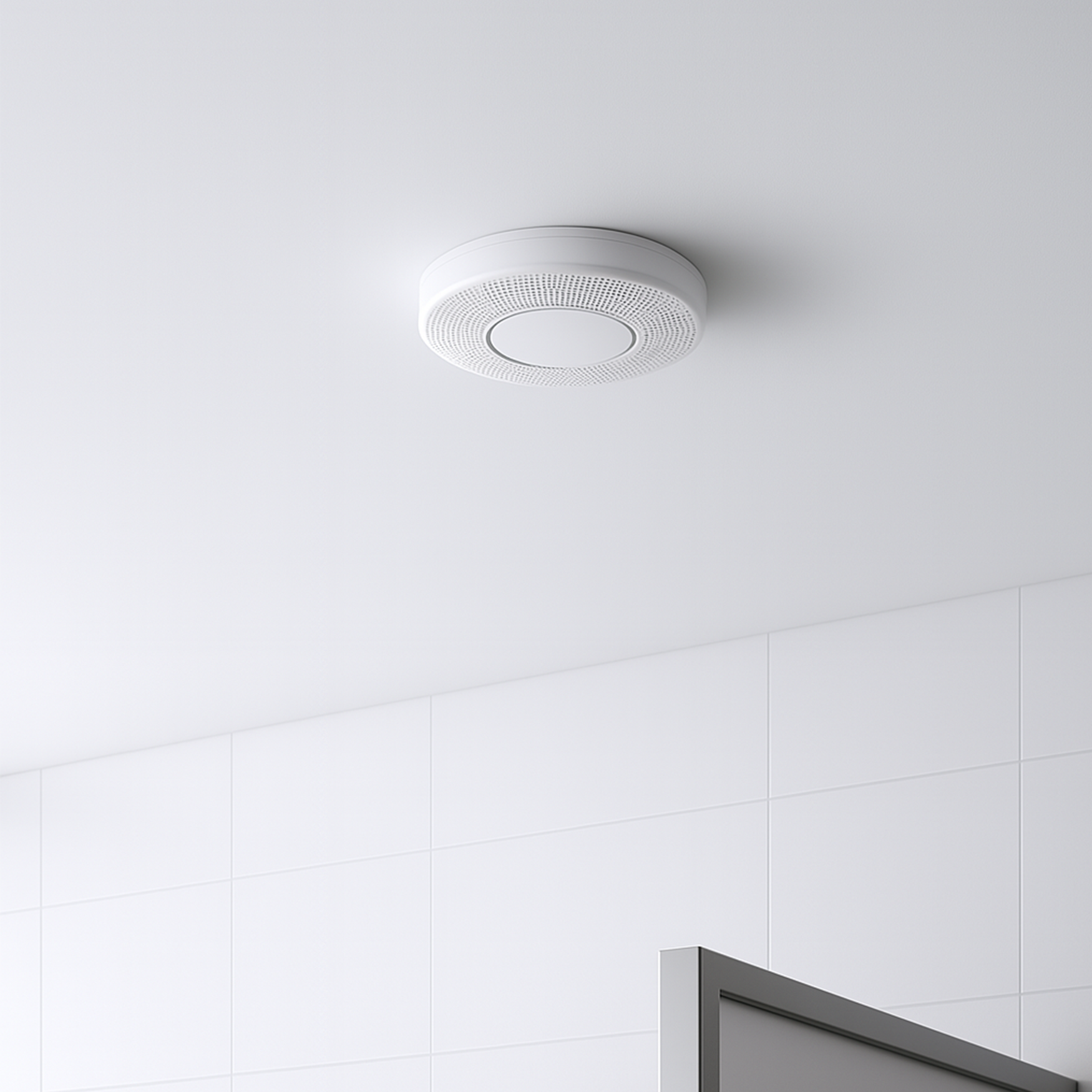
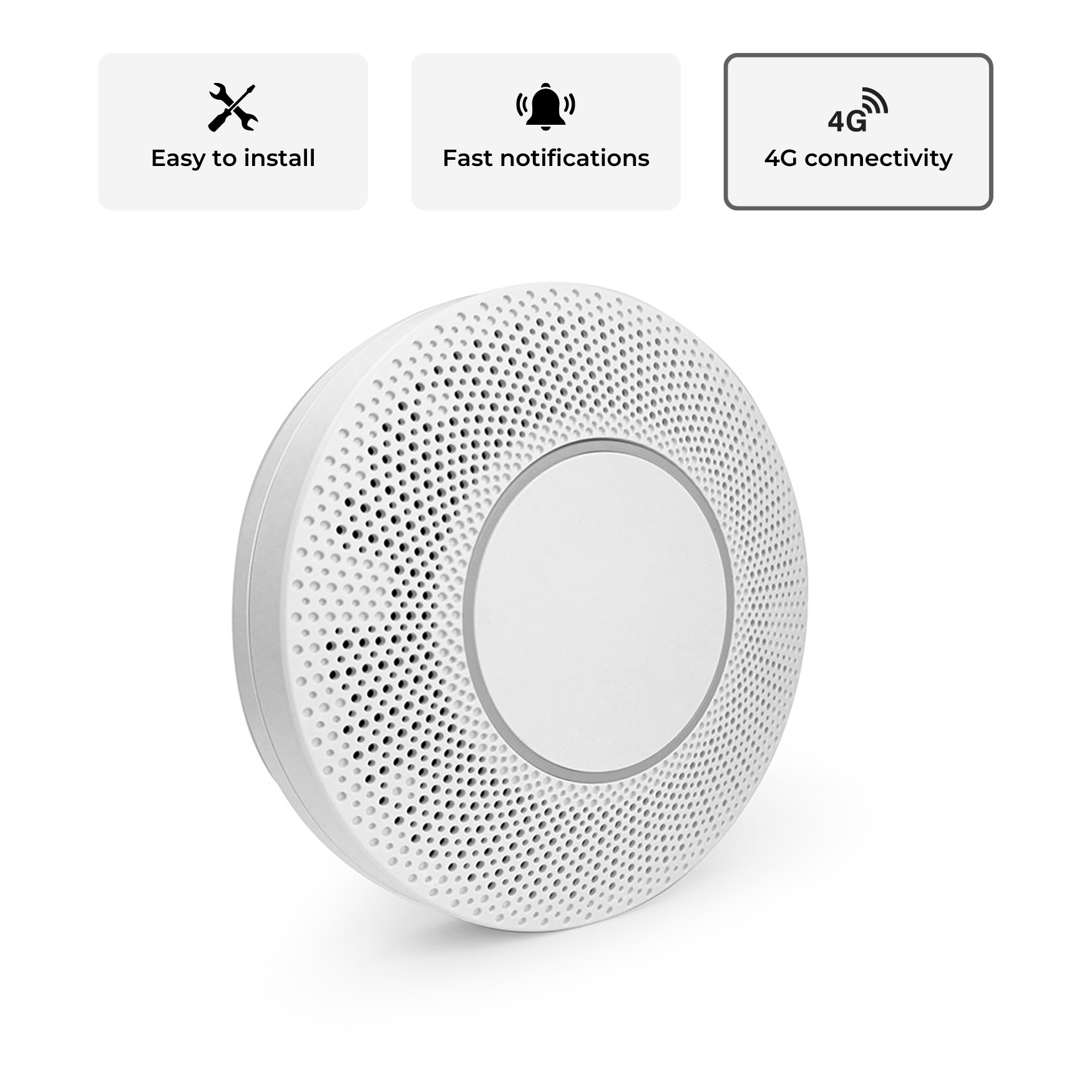
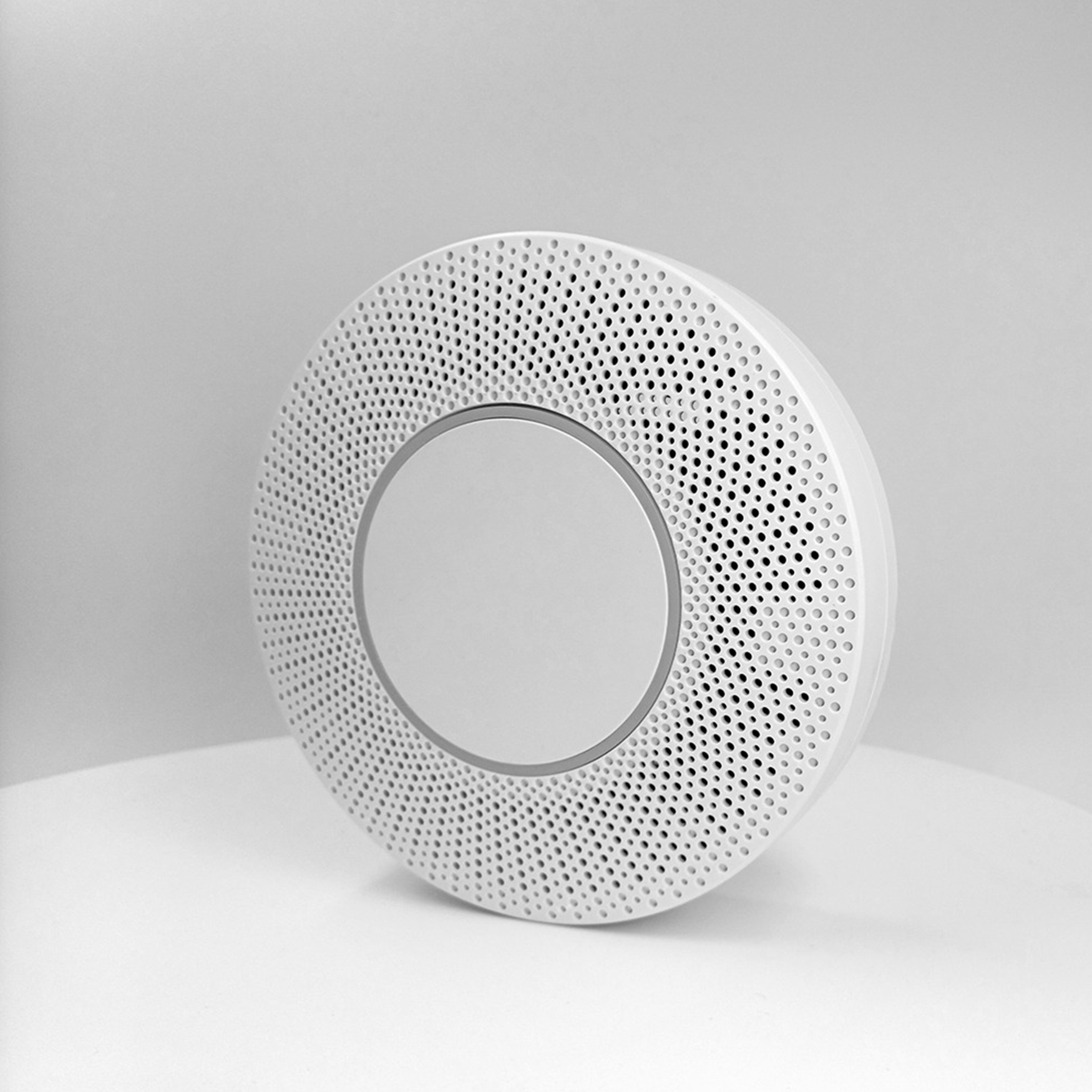
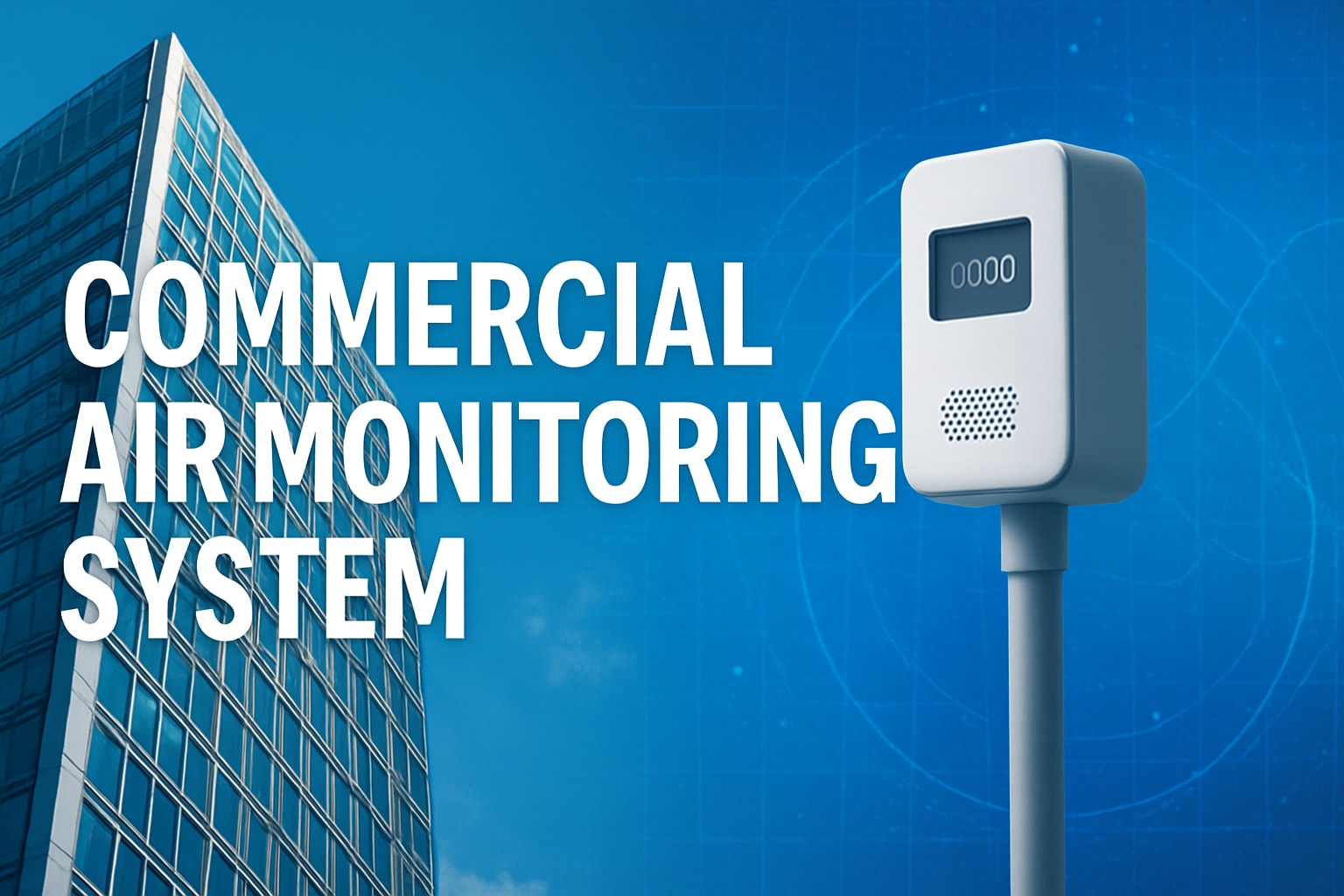


Share:
Vape Detection Australia Guide: Your 2025 Roadmap to Success
Vape Detection System Guide: Essential Insights for 2025